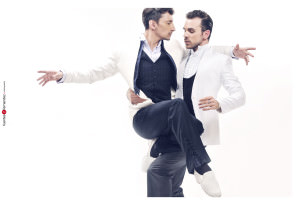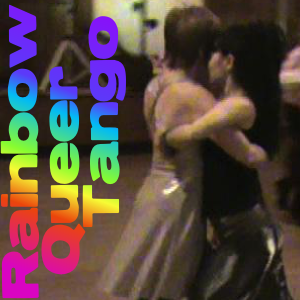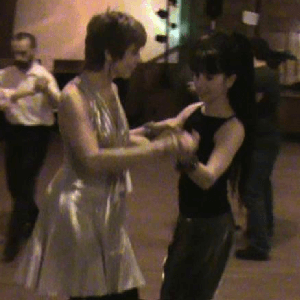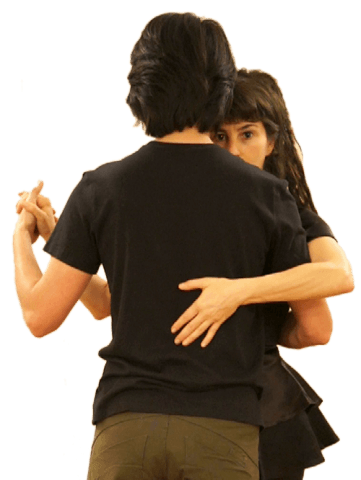I was thrilled by the opportunity to see Martin & Maurizio again. Their beautiful dancing has earned them a significant place in history. They are the first and only gay couple (and the first male-male couple) to be respected in the world class tango circuit.
Thomas Rieser invited them to perform in celebration of the 11th birthday of Nou Tango Berlin.
The first thing I saw when they entered the dance floor was love. Without resort to cliché gestures, they show their love with their eyes and anticipation.
In the second song I saw relationship. They talked to each other, reprimanded one another, delighted in surprises. This is a couple who’ve been relating to each other and to themselves through this dance and partnership for years. Tonights dance was not the first or the last dance. It is for them a process, and they let us see this. They don’t aim for perfection, they show us one dance of thousands, each unique. They let their relationship show through the dance, rather than hiding everything beneath tango serio, or a stage smile.
The slippery floor disrupted their choreography and some of the best moments of the performance were when they hit a fault and had to improvise. Here you could see their experience as artists and their trust in one another. And here I started also to see what for me was the revelation of the evening.
They did not dance with any ambiguity of roles. But they also did not dance with deference. Whoever was the revel took what he needed, set his limits, fixed his own problems. This is part of why I like to mark men. I don’t remember who slipped while taking off into a jump, but he fixed it, rather than depending on the mark to fix it.
I think there are three distinct points here. One is about gender, and escaping the femininity-dependency/masculinity-control addictions. Second there is the matter of muscle and either having equal power or allowing the revel to use muscle to participate. Third is the matter of knowing both roles, and therefore having the presence and awareness to resolve problems smoothly.
The last thing I saw –and a second revelation– was about how role flexibility affects a couple’s artistry. Every couple’s dance should change over the years. At the moment many couples have changed in the direction of slavish service to the fad of “social tango”. Martin & Maurizio have the possibility to develop their artistry by exploring new ways to inhabit the roles, and new relations between them.
 While most couples are stuck with a single gender performance, a gay role-changing couple can explore gender performance and its relationship to their dance with far more subtlety and interest. And it’s not so crude as drag. Martin and Maurizio always dress as two elegant men and they wear men’s shoes. It’s in the physical expression, how they move, how they touch, how they look at each other, how they define and play with power.
While most couples are stuck with a single gender performance, a gay role-changing couple can explore gender performance and its relationship to their dance with far more subtlety and interest. And it’s not so crude as drag. Martin and Maurizio always dress as two elegant men and they wear men’s shoes. It’s in the physical expression, how they move, how they touch, how they look at each other, how they define and play with power.
And it is in this last point that any other way to revel pales in comparison. The revel’s power these guys show is not about the power to disobey, or rebel (a common mishearing of my word ‘revel’), It’s something else. I think it’s about limits. When a woman dances with a man who overpowers here and has all the authority, she races and stumbles to obey. When she cannot, she looks ungraceful. When the partners’ strength and authority in the dance is equal, the revel has limits. Martin and Maurizio showed us those limits, with their eyebrows. “I’m sorry I can’t, I slipped.”… “That mark was late so I didn’t make what you wanted.”… “I can’t do it that way, but I can do it this way.”
The idea that tango is a conversation of interpretation is ridiculous. No good conversation is about constant reinterpretation. What serious and good conversations are about is intelligently, creatively, and compassionately responding to the real limitations of our selves, our relationships, and our world. It was a performance, but it was very real.













